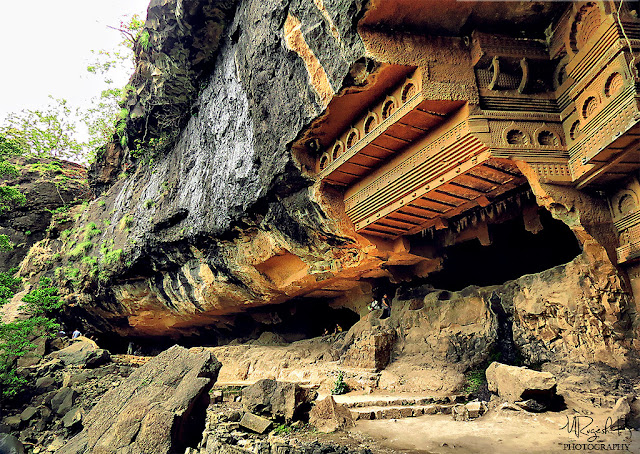BUILDING DURING THE RULE OF THE EARLY MAURYAN DYNASTY (ce. 400 B.C.)
WOODEN ORIGINS
Apart from the fortifications and city of Pataliputra, there has also survived one concrete ‘record of the wooden construction of the palace. of such a high standard of workmanship that it is a definite proof of the Mauryan artificers’ accumulated experience in working in timber.
This consists of a number of massive teak-wood platforms each thirty feet in length found buried deep in the silt and apparently introduced as a kind of raft to support the foundations of the facade or propylaeum of the palace.
Composed of beams jointed together “with a precision and reasoned care that could not possibly be excelled”, they illustrate “the absolute perfection of such work and those who executed them would find little indeed to learn in the field of their own art, could they return to earth today.”!
This high appraisement of the Mauryan artisan’s skill as a worker in wood is confirmed by other evidence of a unique character, Owing to the Indian craftsman’s traditional genius for imitation every detail of this early form of timber construction has been most faithfully reproduced in the numerous and very complete examples of rock architecture which followed, so that although the wooden originals have perished their exact facsimiles remain preserved in the living rock.
In no other country has the carpenters and joiners craft as practiced over two thousand years ago been so fully and accurately recorded, With the material thus provided it is quite possible to extract in theory this timber-work from the rock-cut halls of the Buddhists and conjecturally reconstruct it in its original form.
This procedure represents a transcription in wood of an excavated example at Kondane of the first century B.C., now buried in the forest of the Western Ghats.
This early Buddhist production cut out of the cliff face consisted of a chaitya hall or temple and its attached monasteries, so that two characteristic types of structure are depicted, one arched over by means of a barrel-vault root and the other having a flat roof.
 |
| Kondane Cave |
The timber used by the early Indian carpenters and builders was teak, carefully trimmed into the required shape with an adze.
Not a large variety of joints were employed, most of them being of a simple but effective order and the workmen knew their application thoroughly; where these required to be pinned, bamboo pegs were inserted.
The foundations were prepared by means of beams laid in the manner already described in the construction of the city walls and to these, the uprights, such as the pillars, were tenoned.
Most interesting is the construction of the vaulted roof, as it is worked out on somewhat the same principle as the arch braced timber roof of the Gothic builders of Europe evolved many centuries later.
In the Indian method, the structural membering of the vault was supplemented by a series of curved wooden ribs or groins placed in close order, the whole system anticipating a solution of the problem of arching a space in a most satisfactory and at the same time artistic manner.
The flat-roofed edifices were planned and executed in an equally workmanlike fashion, with pillars supporting the wooden girders, above which were beams and joists placed and jointed in correct position to carry the requisite weight.
Such was the structural system employed in the framework of these timber buildings, but how this was filled in and finished is purely conjectural.
In all probability a filling of plaster (chunam) was added and painted white as there are frequent allusions in the ancient Pali texts to great edifices “gleaming while like a cloud”, an effect evidently considered the height of achievement.
As to the decorative treatment of this wooden architecture, the facades of both the vaulted hall and its attached monastery show that the early carpenter was able to manipulate his material so as to produce the most artistic results, although each effort at embellishment had its practical use.
The great arched window admitted light into the vaulted hall through its tracery, while the balcony in front was a minstrel’s gallery; the projecting casements on each side were priests’ chambers, and below on the left was a room for the sacristan.
Similar decorative but purposeful structures form the frontage of the adjoining building, covered balconies being prominent features as they are in the architecture of the country at the present time.
The system of lighting the smaller rooms by means of bamboo lattices, and in certain instances the entire balcony was a mesh of plaited bamboo strips held together on a framework of wood.
This device was the precursor by many centuries of the pinjra or “cage-work” so common in the later buildings of Upper India as well as the meshrebiva of Egypt and other Islamic countries.
These and many other technical and artistic expedients of this early phase of timber construction may be seen literally petrified and thus imperishably preserved in the later rock architecture of the Buddhist period.
READ ALSO: ASOKA, AND THE BEGINNINGS OF THE BUDDHIST SCHOOL (cir. B.C. 250).
Read About Famous Urdu Poets:




